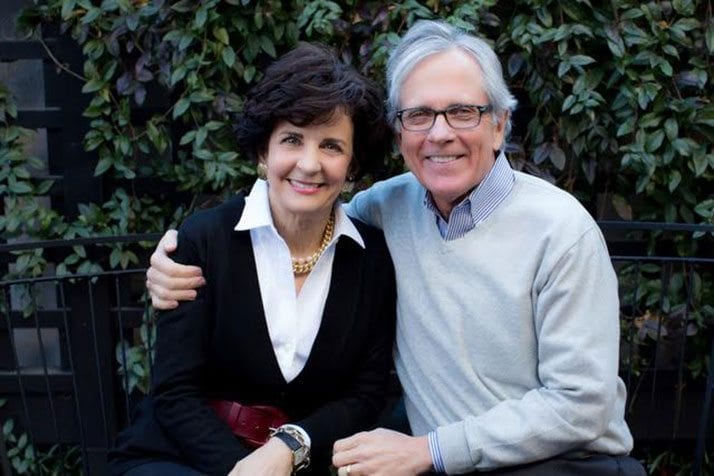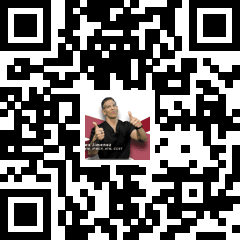Anti Aging
Back Clinic Anti Aging Chiropractic and Functional Medicine Team. Our body is in a constant and never-ending battle for survival. Cells are birthed, cells are destroyed. Scientists estimate that each cell must withstand over 10,000 individual assaults from reactive oxygen species (ROS) or free radicals. Without Fail, the body has an incredible system of self-healing that withstands the attack and rebuilds what has been damaged or destroyed. This is the beauty of our design.
To understand the biology of aging and translate scientific insight into interventions that improve late-life health through treatments. It is useful to have a clear, consensus view on what exactly constitutes anti-aging treatment.
Since before the days of Ponce de Leon’s search for longevity, man has always been enticed by the chance of eternal youth. Chiropractic care with its health movement is a powerful method of stabilizing and enhancing this self-healing ability. Dr. Alex Jimenez discusses concepts surrounding the anti-aging pandora.
.

by Dr Alex Jimenez DC, APRN, FNP-BC, CFMP, IFMCP | Anti Aging, Fitness
Chandler and John Moenius
By Jon Rowley
One of the things I love most about our community at 2020 Fitness is how it cuts across so many demographics. People who may be unlikely to encounter each other in day-to-day life find themselves chatting and having a great time together in class. Chandler and John Moenius are a great example. Here’s Chandler’s 2020 Fitness story in her own words:
Who plans what their fitness activity is going to be in their sixties? Certainly not me. After all, when I was in my thirties, forties and even fifties, sixty seemed light years away. Then, suddenly, I was celebrating my 60th birthday and I decided it was time to get my act together. I always had been active, running when I could fit it in my schedule, even training for two marathons, and attending a bootcamp class for years, but CrossFit? I never dreamed I would set foot in a CrossFit gym, but when I realized my almost 90-year-old mother had lost six inches in height and could barely open a jar without help, I decided it was time to listen to the experts who were saying strength training and flexibility were necessary for successful aging.
I turned to 2020 Fitness since it was close to home, and convinced my husband, John, to go with me. I quickly saw that it was more about doing the workouts with correct form than how much weight I was lifting. While it has been rewarding to increase the weight on my bar and master some moves in the gym, the best part has been my increased flexibility. The coaching staff is so knowledgeable and they give personal attention to everyone in the class. It amazes me how they will remember the sore muscle I had a few days ago or that I struggled with a workout last week and will offer suggestions to work at mastering it the next time. Recently, a lifelong back issue reappeared one Monday morning. I went to class but the coaches quickly pulled me from the workout and had me spend the hour doing mobility exercises instead. I kept with this routine for four days and was able to resume the workout by Friday. Need I say more about the attention and expertise available?
While I’m sure I am pretty close to the oldest female at the gym, I’ve never felt like anyone was singling me out because of my age, and when I need to scale back a workout, the coaches are always willing to provide an alternative. The encouraging atmosphere lets me know that everyone is hoping I will succeed and wants to help me in any way to get there. The camaraderie is outstanding and spills across all age levels from middle school students to my 68-year-old husband. I’ve definitely found my fitness home and I’ve told the coaches many times that I’m not going anywhere. In fact, I plan to be in the pilot class for 90-year-olds in 2044!
We pride ourselves on being able to offer a productive, positive environment for people of all ages. In fact, this summer, we’re hosting a five-week day camp for kids 6 to 10. Check out our website for details and registration information.
This Sponsored Column is written by Jon Rowley of 2020 Fitness. 2020 Fitness provides a positive and fun fitness environment dedicated to improving the lives of its clients.

by Dr Alex Jimenez DC, APRN, FNP-BC, CFMP, IFMCP | Anti Aging
At 89, Donald Tenbrunsel is a bit of a phenomenon. He surfs the internet with ease, happily converses on a broad range of timely topics, volunteers and reads regularly.
Known as a “SuperAger,” Tenbrunsel was part of a study that helped researchers discover what factors might set these super-sharp seniors apart from their peers.
The secret? Brain scans showed they experience brain aging twice as slowly as average folks their age.
“This suggests the SuperAgers are on a different trajectory of aging,” said senior researcher Emily Rogalski. She is director of neuroimaging for Northwestern University’s Cognitive Neurology & Alzheimer’s Disease Center. “They’re losing their brain volume at a much slower rate than average agers.”
For the study, Rogalski and her colleagues measured brain aging by examining the thickness of each person’s cortex — the outer layer of folded gray matter in the brain.
The cortex is where consciousness lies, and where all of the neurons that fire thoughts and movements are located. It is a critical part of the brain for higher-level thinking, memory, planning and problem-solving, Rogalski said.
Another neurologist explained it this way:
“That is essentially our brain,” said Dr. Paul Wright, chair of neurology at North Shore University Hospital in Manhasset, N.Y., and Long Island Jewish Medical Center in New Hyde Park, N.Y. “Brain shrinkage occurs in the natural progression over time, and when you lose brain volume, you lose function.”
Rogalski noted that previous research has shown that the cortexes of SuperAgers look less worn than their average 80-year-old peers, and about the same as people in their 50s or 60s.
But a question remained — were the SuperAgers born with brains that have more volume, and thus could better withstand the travails of aging? Or are their brains the same size as everyone else’s, and simply aging less rapidly?
To answer that question, the researchers tracked changes in cortex thickness for a year and a half in 24 SuperAgers and 12 average elderly people.
Both groups lost a significant amount of brain volume to aging, but average elderly people experienced a loss more than twice that of the SuperAgers — over 2.2 percent versus 1.1 percent.
“Part of the reason why they may have different brain volumes is because over the decades they’ve been losing their brain volume at a different rate,” Rogalski said.
The findings were published April 4 in the Journal of the American Medical Association.
Dr. Ezriel Kornel, a neurologist with Weill Cornell Medical College in New York City, said that at least part of the brain advantage of SuperAgers is genetic, with some people simply gifted at birth.
But there are likely to be environmental influences that also contribute to healthier brain aging, particularly in the womb and in early childhood, Kornel added. For example, research has shown that children raised in poverty tend to have smaller brains.
“There are so many factors involved,” Kornel said. “It could be that even external stressors in childhood can influence how the brain develops.”
Rogalski said that future research will focus on genetic factors that influence brain aging, which hopefully will provide researchers with anti-aging “targets” that could be manipulated with medications or other therapies.
While there’s currently no proven method to preserve cortex volume, research has shown specific lifestyle changes that seniors can perform to help keep themselves sharp as they age, Kornel and Wright said. These include:
Regular physical exercise, including strength training.
A healthy and balanced diet.
Brain workouts that involve challenging puzzles or tasks.
An active social life.
“Everyone understands they’re going to die, but people don’t want to feel they’re losing their ability to think and be who they are,” Kornel said. “This is the next big frontier in science, to figure out how we can prevent overall deterioration of the brain.”

by Dr Alex Jimenez DC, APRN, FNP-BC, CFMP, IFMCP | Anti Aging
A combination of advanced scaffold material and so-called adult stem cells improves the healing of rotator cuff tendon tears over surgery alone, a study in rats suggests.
“As an orthopedic shoulder and knee surgeon and chemical engineer, I think the combination of advanced materials and adult stem cells holds great promise,” Dr. Cato T. Laurencin from University of Connecticut in Farmington told Reuters Health. “For the shoulder, we are looking next to bring this type of technology to clinical use for the treatment of partial thickness and full thickness rotator cuff tendon tears,” he said by email.
Rotator cuff tendon tears are common and often require surgical repair, but most severe tears recur and require additional surgery. Because tendons are made mainly of collagen fibers, with few cells, they have little capacity for regeneration on their own, Laurencin’s team writes in the online journal PLoS ONE.
To see if mimicking the environment in which tendons normally grow would help repaired tendons to heal better than surgery alone, the researchers tested an artificial scaffold embedded with stem cells in a rats with a surgically repaired tendon tear. They compared how well it healed to the same kind of repair in rats that had only the surgery.
The tears repaired with stitches alone continued to show disorganized tissue 12 weeks after surgery, while tendons appeared much more normal after repair using the approach that combines advanced scaffold material with cells to engineer ideal conditions for tissue regeneration.
The addition of stem cells in the matrix, or scaffold, also led to increased mechanical strength and more normal characteristics of the replacement tendon tissue, compared with suturing alone, the study authors note.
The stem cells themselves disappeared over time, suggesting that the therapeutic effect resulted from their release of growth factors or other signaling molecules, rather than from the stem cells turning into tendon.
“We believe they can change the local environment and make it more compatible for regeneration,” Laurencin said. “The stem cells don’t have to become new tissue; they can work by influencing the environment to make better, regenerated tissue. The use of a nanotechnology based matrix is important in making it happen. That’s what this study suggests.”
“We are also developing this type of technology for use in treating problems of the knee,” he noted.
“We believe that the future for tissue regeneration lies in the combination of a number of areas of science and technology: advanced materials science, stem cell science, understanding how physical forces work in regeneration, developmental biology, and clinical translation,” Laurencin said.
“The work presented here combines many elements of regenerative engineering. The real successes will see not just using stem cells alone, but the convergence of different technologies. This new direction in thinking will provide exciting new possibilities for patients in the years to come,” he said.

by Dr Alex Jimenez DC, APRN, FNP-BC, CFMP, IFMCP | Anti Aging
Astaxanthin, a red pigment found mostly in marine life, can switch on a variation of the FOXO3 gene, which protects against aging, say scientists from the University of Hawaii.
“All of us have the FOXO3 gene, which protects against aging in humans,” said Bradley Willcox, M.D. “But about one in three persons carry a version of the FOXO3 gene that is associated with longevity.
“By activating the FOXO3 gene common in all humans, we can make it act like the ‘longevity’ version. Through this research, we have shown that astaxanthin ‘activates’ the FOXO3 gene,” said Willcox.
In the study, mice were fed either normal food or food containing a low or high dose of an astaxanthin compound called CDX that was developed by Cardax, a Honolulu-based life sciences company.
The animals that received the higher amount of astaxanthin showed a significant increase in the activation of the FOXO3 gene in their heart tissue.
“We found a nearly 90 percent increase in the activation of the FOXO3 ‘Longevity Gene’ in the mice fed the higher dose of the astaxanthin compound,” said Richard Allsopp, Ph.D.
The researchers hope further research will confirm astaxanthin’s role in helping alleviate the effects of aging in humans.
Astaxanthin is a red pigment found mostly in marine life and is responsible for giving salmon, lobster, and other animals their reddish coloring. Studies have found that astaxanthin has a powerful ability to neutralize the free radicals in the body that cause aging by damaging cells. Laboratory studies have found that astaxanthin has 6,000 times the ability of vitamin C and 550 times the power of vitamin E to combat oxidative damage.
Astaxanthin is most abundant in wild Pacific sockeye salmon with 3.2 milligrams in a 3-ounce serving. Farmed rainbow trout comes in second at 2.1 milligrams in a 3-ounce serving. Other natural sources include algae, lobster, crawfish, and krill.

by Dr Alex Jimenez DC, APRN, FNP-BC, CFMP, IFMCP | Anti Aging
Men and women of a certain age realize quickly that their muscles diminish faster than they used to, and that muscles do not respond to exercise the way they used to. A new study shows that it’s all in the mitochondria — the part of the cell responsible for energy and vitality — and there is an exercise plan that can benefit the older crowd, even surpassing — surprisingly — benefits for the younger crowd.
Among various regimens of exercise, researchers found that interval training for a group older than 64 altered the working mechanisms in an amazing 400 genes — compared to only 274 for a group 30 or younger. The vitality in the older crowd’s cells responded more robustly than the younger crowd — adding another layer to the need for older folks to hit the gym.
Here’s how the experiment was conducted: 72 healthy but sedentary men and women were divided into two groups — 30 or younger, or older than 64 by researchers at the Mayo Clinic in Rochester, Minn. Their vitals were measured, including blood-sugar levels, gene activity, and mitochondrial health in their muscle cells. Then the volunteers were randomly assigned to 1 of 3 exercise regimens.
Some did vigorous weight training several times a week; some did brief interval training three times a week on stationary bicycles (pedaling hard for four minutes, resting for three minutes, then repeating for three times); some rode stationary bikes at a moderate pace for 30 minutes a few times a week and lifted weights lightly on other days. For control purposes, a fourth group did not exercise.
After 12 weeks, vitals were again checked for all involved. All exercise groups experienced improvements in fitness and blood sugar regulation.
Strength and endurance were affected differently, but predictively: The gains in muscle mass and strength were greater for those who exercised only with weights, while interval training had the strongest influence on endurance.
But biopsied muscle cell activity proved to be surprisingly different. Among the 30 and younger who went through interval training, the activity levels had changed in 274 genes, compared with 170 genes for those who exercised more moderately and 74 for the weightlifters. In the older crowd, almost 400 genes were working differently — more activley — for interval training, compared with 33 for the weightlifters and only 19 for the moderate exercisers.
Those who did the interval workouts showed increases in the number and health of their mitochondria. The takeaway: Interval training seems to be the best way to achieve vital cell health for muscle mass —particularly for those who are age 64 and older. Better muscle mass means a healthier, stronger body.
The decline in the cellular health of muscles associated with aging seemed corrected with interval exercise, especially if intense, Dr. Sreekumaran Nair, a professor of medicine and an endocrinologist at the Mayo Clinic and the study’s senior author, told The New York Times. Moreover, as his results show, older people’s cells responded in some ways more intensely than the cells of the younger group — suggesting, he says, it is never too late to benefit from exercise. Nair and his research team’s results were published in the journal Cell Metabolism.

by Dr Alex Jimenez DC, APRN, FNP-BC, CFMP, IFMCP | Anti Aging
Drugs that treat hair loss and prostate enlargement are tied to a small increased risk of depression and self-harm, according to a new study from Canada.
The pills were not tied to an increased risk of suicide, however.
The drugs finasteride and dutasteride belong to a class of medications known as 5-alpha-reductase inhibitors (5ARIs). 5ARIs have come under increasing scrutiny in recent years by regulators in the United States and Canada because of a possible link to mental health issues, according to the researchers.
“There wasn’t a lot of good studies in this area, and it’s a very common medication for urologists to use,” said lead author Dr. Blayne Welk, of Western University and the Institute for Clinical Evaluative Sciences in Ontario.
Welk’s team analyzed data from 93,197 men who were at least 66 years old when they received prescriptions for 5ARIs between 2003 and 2013, plus another 93,197 similar men who had never filled a prescription for a 5ARI.
Overall, 5ARIs were not linked with an increased risk of suicide, the researchers reported in JAMA Internal Medicine.
During the first 18 months, however, the men using 5ARIs had an 88 percent higher risk of harming themselves. That risk did not extend beyond 18 months.
Men in the 5ARI group also had a 94 percent higher risk of depression in the first 18 months, compared to men not using these drugs. Beyond 18 months, the increased risk of depression fell to 22 percent.
The type of 5ARI did not appear to significantly alter the results.
Welk cautions that the actual risk of depression and self-harm is very low.
If the drugs were actually causing these side effects – which this study wasn’t design to prove – “you’d need 470 men to take this medication for a full year to have a new case of depression,” Welk told Reuters Health.
That number would have to be even higher to cause a new case of self-harm, since self-harm is less common than depression.
“It is a risk potentially and patients and physicians should be aware of it,” Welk said.
A separate study in the journal PeerJ evaluated another concern about 5ARIs – erectile dysfunction.
Drs. Tina Kiguradze and William Temps of Northwestern University Feinberg School of Medicine in Chicago and colleagues found that when erectile dysfunction occurred in men taking 5ARIs for at least 180 days, the dysfunction was more likely to last at least 90 days after stopping the medication. Erectile dysfunction, when it occurred, resolved faster in men who took the medications for shorter periods.
The proportion of men taking 5ARIs and experiencing erectile dysfunction is likely around 5 percent, according to Dr. Landon Trost, who is head of andrology and male infertility at the Mayo Clinic in Rochester, Minnesota.
But it’s not clear how many men suffer persistent erectile dysfunction after stopping 5ARIs, said Trost, who was not involved with either of the new studies.
“I think it’s important to be educated about the potential side effects,” he told Reuters Health.
Men who are already at increased risk for these potential side effects must weigh the risks and benefits of the drugs, Trost said.
He said older men taking 5ARIs for prostate problems might come to different conclusions than young men taking the pills for hair loss.
Additionally, he said, men should tell their doctors if they experience these symptoms.

by Dr Alex Jimenez DC, APRN, FNP-BC, CFMP, IFMCP | Anti Aging
Men who see more ads for low testosterone or “low T” on local television channels may be more likely to seek tests or treatments to boost their levels of the hormone, a U.S. study suggests.
Testosterone levels naturally decline with age, and some men with extremely small amounts of the hormone may be diagnosed with what’s known as hypogonadism and prescribed needed testosterone therapy, researchers note in JAMA.
Far more men take testosterone than have hypogonadism or clear evidence of a medical problem tied to low hormone levels, however. Many of them may have been convinced to seek unnecessary treatment by ads promoting “low T” as a health problem associated with issues like reduced libido or fatigue, said lead study author Bradley Layton, a public health researcher at the University of North Carolina at Chapel Hill.
“The original approval for testosterone intended it to be used only in a very narrow group of men with very clearly-defined diseases which stop the production of testosterone,” Layton said by email. “However, much of the use recently has been in men with reduced testosterone levels or some non-specific symptoms like fatigue, loss of muscle mass, reduced libido or lowered mood which may be related to normal aging or other disease conditions,” he said.
“There is very little evidence that testosterone would benefit men without a clear indication for taking it, and there are still unresolved safety concerns about testosterone that just don’t justify widespread treatment of older men with normal age-related reduced testosterone,” Layton added.
In 2014, U.S. drug regulators raised safety concerns about the potential for testosterone to increase the risk of heart problems.
For the current study, researchers examined data on testosterone ad viewership, testosterone testing and prescriptions of the hormone from 2009 to 2013. They looked at insurance claims data for 17.2 million men in 75 distinct television markets nationwide.
During the study period, more than 1 million men got new tests for testosterone levels and more than 283,000 initiated testosterone treatment, the study found.
Among men who started taking testosterone, 59 percent used gels and 36 percent got injections, while a small minority of them got patches or implants.
Prior to 2012, ads for “low T” were the most common type of marketing. Then, after two new products – Axiron and a more concentrated form of Androgel – debuted in 2011, ads for specific products became more common and promotions for “low T” started to decrease.
During some months of the study, there were no ads at all, while in other months some men might have seen as many as 14 ads on average.
The most concentrated advertising efforts occurred in the Southeast and in the Great Lakes region, the study found.
Each additional ad men saw was associated with a 0.6 percent increase in testing as well as a 0.7 percent climb in new prescriptions for testosterone. There was also a 0.8 percent increase in new prescriptions that were not preceded by testing.
Although the impact of a single ad was slight, ads were widespread and frequent during the study period and cumulative exposure was close to 200 ads in some markets, the authors note.
The study wasn’t a controlled experiment designed to prove that ads directly influence whether men get testing or treatment for low testosterone, the researchers caution. They also relied on data for prescriptions, which doesn’t necessarily reflect how often men took the drugs.
Still, the findings should put consumers on alert to be wary of ads, said Dr. Richard Kravitz, a researcher at the University of California, Davis, and author of an accompanying editorial.
“Direct-to-consumer advertising is designed to be persuasive,” Kravitz said by email. “Patients can’t really avoid this. All they can do is reflect on the fact that ads are designed primarily to increase sales, not inform and educate the public, and they should try to present their symptoms and concerns as objectively as possible to their physician.”









